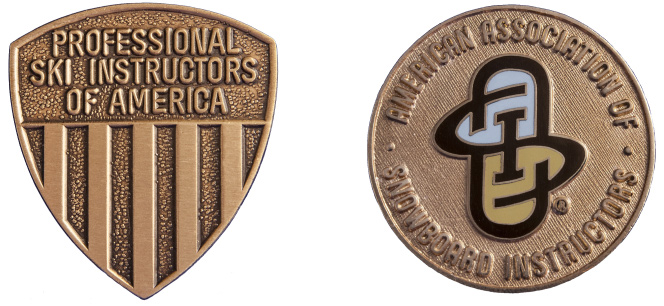In this final chapter of the PSIA-AASI “Chasing Winter” series, we talk to AASI Snowboard Team member Chris Rogers and PSIA Alpine Team member Kevin Jordan as they prepare to head to Los Angeles to work with SkyTechSport, manufacturers of interactive ski and snowboard simulators.
SkyTechSport’s variety of simulators can be used for personal or commercial use for teaching or training. Here’s what Chris and Kevin had to say about their late summer project.
Q: What are you guys working on with Skytech?
A: Chris: In 2016, SkyTech partnered with PSIA-AASI, and National Team members Jonathan Ballou, Eric Lipton, and Josh Spoelstra, and I spent a few days out in LA working with the simulator and figuring out how to teach using the equipment. We wrote a manual and shot a video series to help SkyTech instructors teach skiing and snowboarding on their simulator. They’re still using those materials to train new SkyTech instructors. We’ll be filming videos with drills and tips for using the simulators to drive interest in the machines.
Q: Where and how does this work take place?
A: Chris: We’ll be at their main showroom in LA. Kevin and I have been working with SkyTech on a list of drills to shoot while we’re there, and we’ll also be shooting some interviews and voice-overs for the series. They’re also doing similar work on the fitness side of using the simulator.
Q: How will this benefit other instructors as well as other riders?
A: Kevin: You can ski the simulator 365 days a year. What I’m hoping to do is create some benefits for other instructors to show them a drill or tip on the simulator that they can either try on a simulator or take to the snow right away.
Q: For those of us who have not used the technology, how does it feel to actually ride on it, and how does it simulate the mechanics and motion of riding on snow?
A: Chris: Unlike moving-carpet style simulators that create vertical movement, the SkyTech simulator uses a side-to-side motorized band with resistance. When you tip the skis/board to the right, the platform moves to the right. When you tip to the left, you then lean into the turn and fight g-forces until the platform begins moving to the left. Within a few turns you’re using a combination of inclination and angulation to control your edging, and it feels just like ripping carves on snow.
Q: What would you tell other instructors who are curious about using this technology to keep themselves in ski and ride shape?
A: Kevin: I’d tell them to try it. One question I’m going to ask is how much these simulators cost. I think there could be a great application to having one of these in a boot and ski shop. You could have your boots worked on, and then try it right away on the simulator without waiting to go to the closest ski area.
A: Chris: Using a SkyTech simulator is a full-on workout, like riding a stationary bike or running on a treadmill. Unlike riding on a mountain where you’ll have traffic, lift rides, or waiting for buddies, you can go full tilt for as long as your body will let you. How long do you get to ride at 100 percent at your mountain – maybe two to three minutes if you’re lucky? A 30-minute session is $80 and includes 1:1 private instruction. If you’re in LA, you owe it to yourself to check it out!
Here’s a sample of SkyTech Sport’s snowboarding simulator lessons: AASI Snowboard Instruction playlist.

